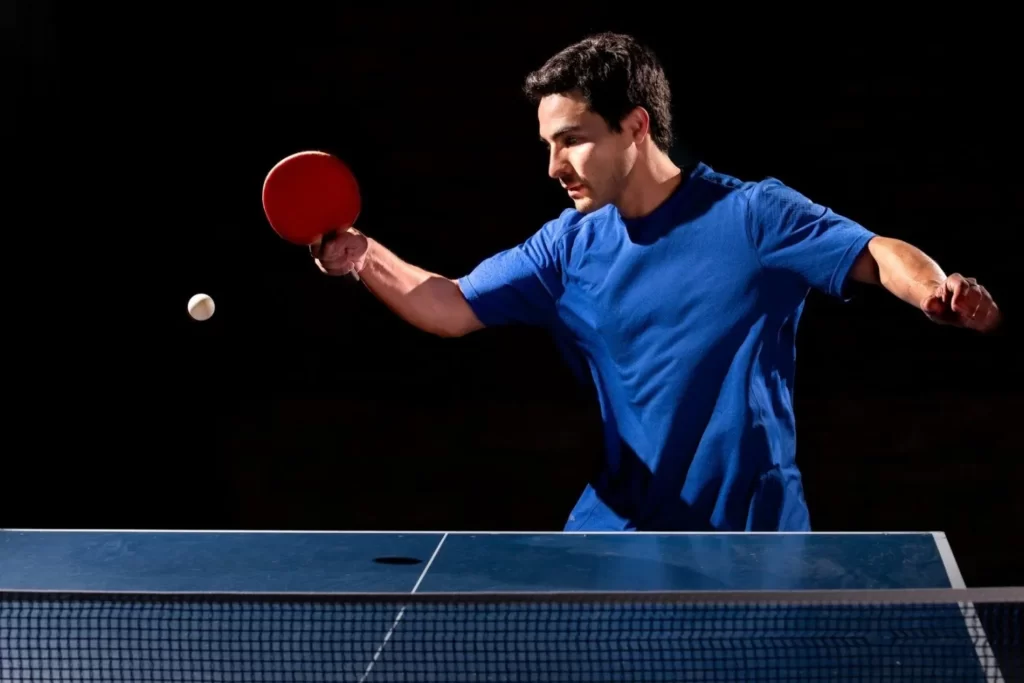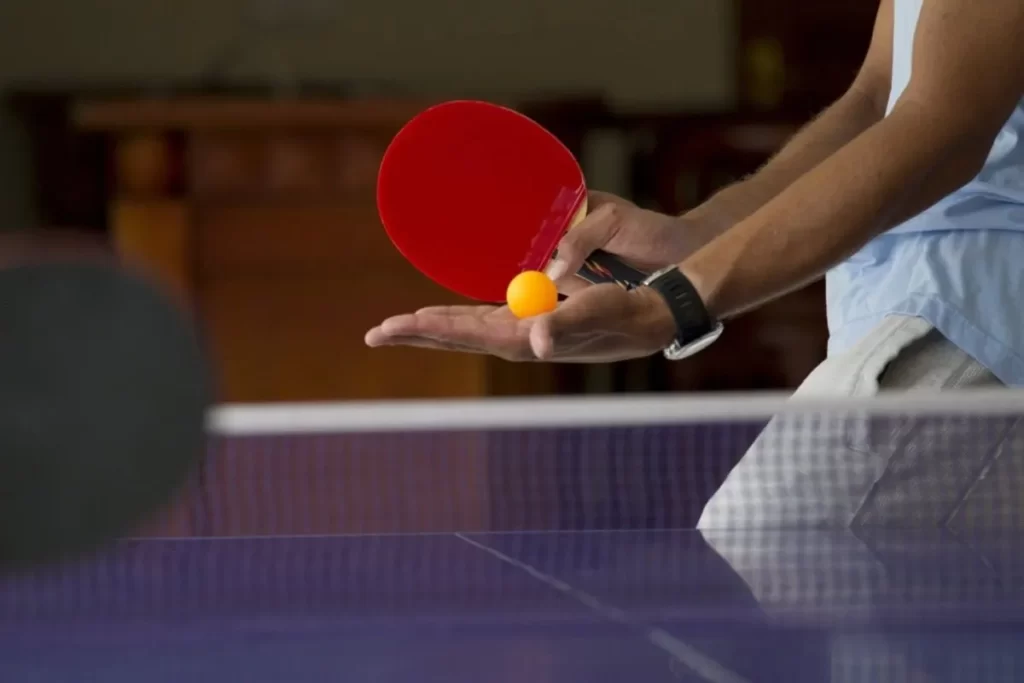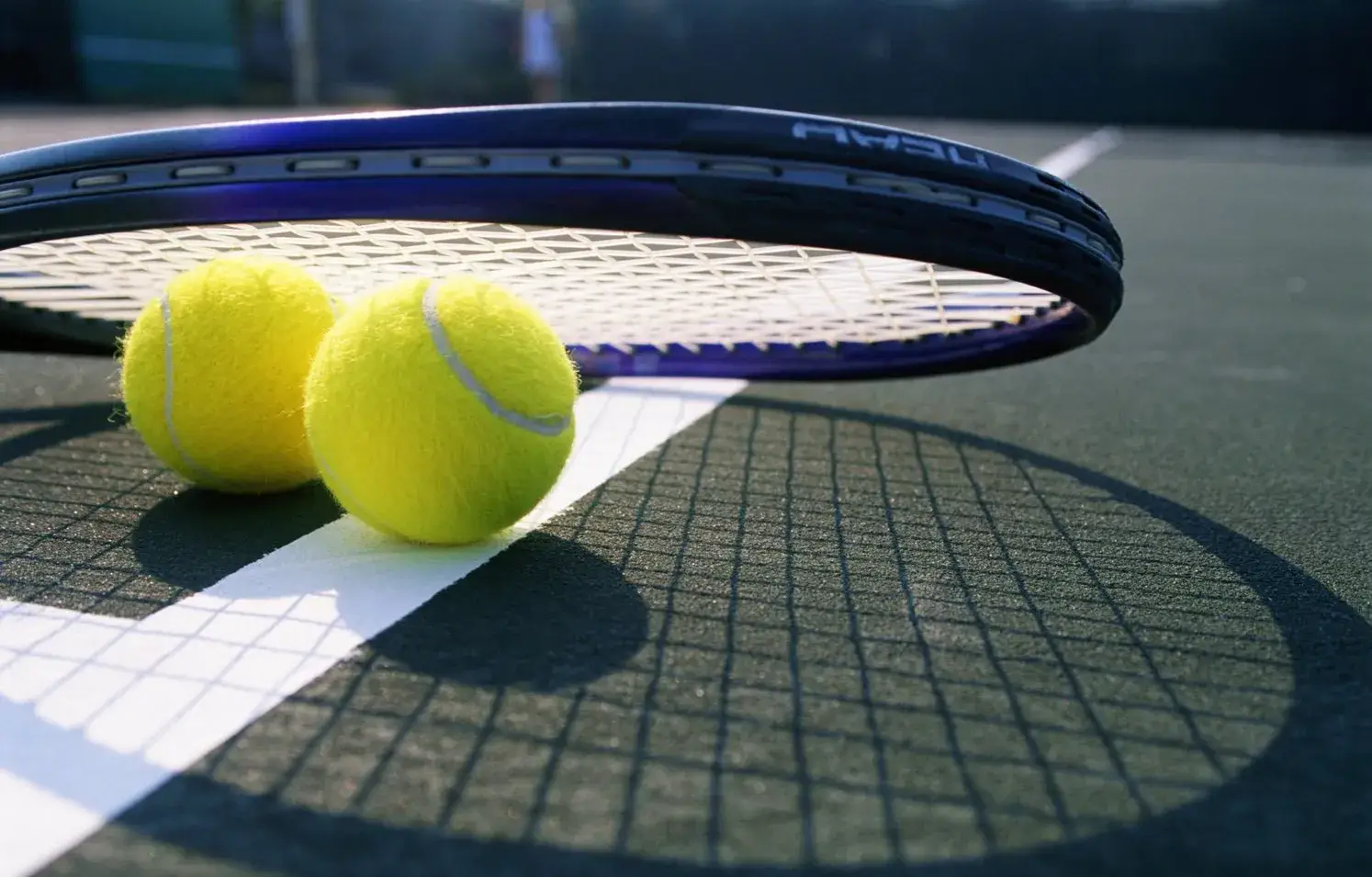Table tennis is an art that requires speed, agility and tactics. The story began in England at the end of the 19th century, when it was called “ping pong”, and since then the game has conquered the world, from European parlours to Asian sports arenas. The direction is captivating not only because of its dynamism, but also because of how every element in it – from the stance to the serving technique – matters. Understanding the rules of table tennis will not only help you play better, but truly enjoy every moment at the table.
The basic rules of the game
They concern the playing area, points and scoring system, use of the racket. Let’s take a closer look.

Playing area
The table tennis table measures 2.74 metres long by 1.525 metres wide and 76 cm high. A 15.25 cm high net divides the table in half, creating a barrier to successful attacks and clever strategies. The playing area must be large enough for players to move freely and make accurate shots. This is important, especially in professional matches where every movement decides the outcome of the game. The basic rules of table tennis prescribe strict dimensions to ensure the same conditions for all players.
Points and scoring systems
There is a unique scoring system: each draw brings one point, and a game is usually played to 11 points. If the score reaches 10:10, play continues until one player wins by two points. Interestingly, professionals often play five to seven games per match, while amateurs prefer to limit themselves to three. These standards make the process both dynamic and fair, which helps keep interest and tension high throughout the match.
How to play the racquet correctly
The correct racket grip is the basis of success. There are two basic types of grip: European (“hammer handle”) and Asian (“feather”). How to hold a table tennis racket correctly depends on the player’s style. The former allows you to control powerful strokes from both sides, while the latter is better suited for fast play and change of pace. Most beginners prefer to start with the European grip as it provides more intuitive control and stability.
Table Tennis Serving Rules
 The serve is not just a moment to start a game, it is a fundamental tactical element. A player must hold the ball in the open palm of his hand, throw it up to a height of at least 16cm and hit it so that it first touches his side of the table and then the opponent’s side. The rules require that the ball must always be visible to the opponent, otherwise it is an offence.
The serve is not just a moment to start a game, it is a fundamental tactical element. A player must hold the ball in the open palm of his hand, throw it up to a height of at least 16cm and hit it so that it first touches his side of the table and then the opponent’s side. The rules require that the ball must always be visible to the opponent, otherwise it is an offence.
Types of serves and their tactical significance
There are many variations of serves:
- Short: The ball barely goes over the net and falls close to the edge of the opponent’s table. Such a serve makes it difficult to hit back and forces the opponent to be accurate.
- Long: The ball flies deep into the opponent’s side, creating space for strong attacking shots. This serve makes it difficult to react and forces the opponent to make quick decisions.
- Side Spin serve: The ball has a side spin, which makes its trajectory unpredictable. This is especially effective when the opponent is not prepared for an unexpected change of direction.
- Top-spin serves: The ball flies with top spin, causing it to bounce quickly upon contact with the table, making it difficult for the opponent to hit back.
For example, a short serve with a strong spin can be a real challenge for the opponent, forcing him to get closer to the table and thus creating an opportunity for further attack. An impeccable knowledge of the rules of table tennis allows you to vary your tactics and change the tempo of the battle in unexpected ways.
Serving errors and how to avoid them
Many beginners often make typical mistakes such as incorrect hand position, too weak of a toss or not seeing the ball to the opponent. To avoid such mishaps, it is important to practise accuracy and control. Constant practice is the key to a confident serve that complies with all the rules of table tennis.
Table Tennis Techniques
The two most important strokes are the forehand and backhand. The forehand is performed when the ball is on the same side as the player’s working hand, and the backhand is performed on the opposite side. Table tennis technique requires precise control over every movement so that the strokes are accurate and varied. It is important not only to learn the basic strokes, but also to be able to change them depending on the situation on the table.
Moving around the table: dexterity makes all the difference
Moving around the table correctly is also a part of success. Players must be able to change positions quickly to be ready to hit. The basic rules of table tennis prescribe not only accurate strokes, but also the ability to react in time to the opponent’s actions. Practice includes exercises on movement and position control.
Tactics and strategies: how to outplay your opponent
To outplay your opponent, you need to use not only technique but also strategy. Important tactical points:
- Rotation: The use of different rotations (topspin, side spin) can confuse the opponent, making his punches more difficult and forcing him to make quick decisions.
- Change of pace: Constant change of speed, alternation of fast and slow strokes breaks the opponent’s habitual rhythm and can force him to make mistakes.
- Unexpected change of direction: The ability to suddenly change the direction of the shot creates a significant advantage, because the opponent is difficult to predict in advance where the ball will fly.
- Playing against your opponent’s weaknesses: Identifying your opponent’s weaknesses (e.g. an unsure backhand) and targeting these areas helps to maximise your opponent’s weaknesses.
Table tennis technique combined with proper tactics can turn even the most difficult opponent into a vulnerable target.
Penalties and mistakes in table tennis
Beginning players often make mistakes that are easy to correct with experience and practice. Incorrect stance, underpowered strokes or a too predictable serve – these reduce the chances of success. It is important to train not only technique, but also psychological stability. And, of course, you need to know the rules of table tennis perfectly.

Penalties and their consequences
Violations of the rules result in the loss of points. For example, a serve in which the ball is not thrown at the correct height is considered an error and results in a penalty. The latter in table tennis includes the loss of a game, which can be decisive in a tense match. Strict rules and adherence to them make the competition fair and exciting.
Conclusion
 Learning the rules of table tennis is the first step on the road to mastery. Mastering technique, reading your opponent’s game and using tactics correctly make this sport incredibly exciting and varied. Every element – from serving to moving around the table – plays a key role in achieving success. Practice and constant improvement will not only help you improve your skills, but you’ll also enjoy your game. Start practising today to take your game to the next level at the table tennis table tomorrow.
Learning the rules of table tennis is the first step on the road to mastery. Mastering technique, reading your opponent’s game and using tactics correctly make this sport incredibly exciting and varied. Every element – from serving to moving around the table – plays a key role in achieving success. Practice and constant improvement will not only help you improve your skills, but you’ll also enjoy your game. Start practising today to take your game to the next level at the table tennis table tomorrow.
 en
en  de
de  ar
ar  es
es  nl
nl  hi
hi  fr
fr  it
it  pt
pt  el
el 









